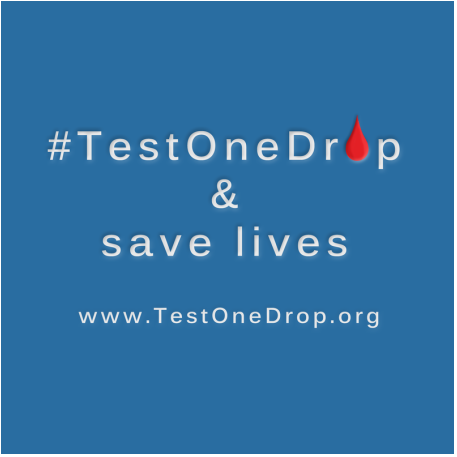DIABETIC KETOACIDOSIS (DKA)
Diabetic ketoacidosis, also called DKA, is a life-threatening complication occurring with undiagnosed and/or untreated Type 1 diabetes in adults and children. DKA symptoms often remain undiagnosed because they can look like (mimic) influenza, a stomach bug, strep infections, and other common illnesses and conditions. However, someone may actually have a common illness and DKA at the same time, causing the common illness symptoms to hide (mask) the underlying DKA symptoms. Either way, untreated Type 1 diabetes and DKA are 100% fatal.
IMPORTANT: Diabetic ketoacidosis is LIFE-THREATENING and can progress quickly–often within 24 hours! If you or a loved one have any of the following symptoms with VOMITING AND LETHARGY COMBINED WITH LABORED BREATHING, do not consume sugar and seek emergency medical care immediately. Insist medical personnel Test One Drop of blood or urine for glucose (sugar) levels. DKA can be fatal!
IMPORTANT: Diabetic ketoacidosis is LIFE-THREATENING and can progress quickly–often within 24 hours! If you or a loved one have any of the following symptoms with VOMITING AND LETHARGY COMBINED WITH LABORED BREATHING, do not consume sugar and seek emergency medical care immediately. Insist medical personnel Test One Drop of blood or urine for glucose (sugar) levels. DKA can be fatal!
SYMPTOMS OF DKA:
*A combination of any of these symptoms can be life-threatening. Seek EMERGENCY CARE. |
Undiagnosed Type 1 Diabetes + DKA
When new onset Type 1 diabetes remains undiagnosed and untreated the shortage of insulin causes blood glucose (sugar) levels to climb above the normal range. Without adequate insulin to regulate levels of glucose in the blood, high levels of acids called ketones build up in the body causing diabetic ketoacidosis. Ketones are toxic and if left untreated are fatal. Onset of Type 1 diabetes develops over different periods of time for different people, e.g., weeks, months, years. Once the untreated blood glucose reaches a consistently high level and ketones begin to build in the undiagnosed and untreated person, diabetic ketoacidosis progresses rapidly and will result in death if not treated.
IS DKA LIMITED TO THOSE WITH
NEW ONSET TYPE 1 DIABETES?
It should be noted that diabetic ketoacidosis is NOT limited to new onset Type 1 diabetes patients. It can also develop in those who have already been diagnosed with Type 1 (or Type 2 diabetes) and begun insulin treatment. Difficulties with self-care protocols, as well as illnesses and bacterial or viral infections can also lead to life-threatening DKA in these previously diagnosed and treated people.
People with diabetes can develop DKA when blood glucose is in normal range. For example, if a person who has Type 1 diabetes is sick with a stomach bug and cannot eat or drink, their body still needs insulin. So–even though one's blood glucose level may not be elevated due to vomiting and lack of food/drink intake–if insulin levels are too low, life-threatening DKA can quickly develop.
Common illnesses can be more dangerous for those who have been diagnosed with Type 1 diabetes, and professional medical care such as IV fluids are often required. It's important to always contact your medical healthcare provider (preferably an endocrinologist), whenever someone with known Type 1 diabetes becomes ill, to report symptoms and request a sick-day protocol. Monitoring blood glucose levels very often (even when sleeping) and frequent in-home testing for ketones anytime blood glucose is above 200 mg/dL (11.1 mmol/L) are keys to avoiding or stopping DKA.
Be aware that insulin needs may increase when ill, and ask your medical healthcare provider for advice. If your doctor cannot be reached, seek emergency medical care.
People with diabetes can develop DKA when blood glucose is in normal range. For example, if a person who has Type 1 diabetes is sick with a stomach bug and cannot eat or drink, their body still needs insulin. So–even though one's blood glucose level may not be elevated due to vomiting and lack of food/drink intake–if insulin levels are too low, life-threatening DKA can quickly develop.
Common illnesses can be more dangerous for those who have been diagnosed with Type 1 diabetes, and professional medical care such as IV fluids are often required. It's important to always contact your medical healthcare provider (preferably an endocrinologist), whenever someone with known Type 1 diabetes becomes ill, to report symptoms and request a sick-day protocol. Monitoring blood glucose levels very often (even when sleeping) and frequent in-home testing for ketones anytime blood glucose is above 200 mg/dL (11.1 mmol/L) are keys to avoiding or stopping DKA.
Be aware that insulin needs may increase when ill, and ask your medical healthcare provider for advice. If your doctor cannot be reached, seek emergency medical care.
KEY TERMS
acetone breath: a byproduct of ketoacidosis that smells like fruit or nail polish remover
endocrinologist: a medical doctor who specializes in treating one's endocrine system
glucose: sugar made from digested foods and used by the body for energy
insulin: a hormone that is produced in the pancreas or injected to regulate glucose levels
ketones: acidic byproduct of fat metabolism produced when there is a lack of sugar for energy
ketoacidosis: too many ketone bodies in the blood
Type 1 diabetes: an autoimmune disease in which the beta cells of the pancreas are under an on-going autoimmune attack making the hormone called insulin unavailable
Type 2 diabetes: a complex metabolic disorder in which many of the body's functions related to insulin are hindered, increasing the production of insulin, and resulting in fat storage
endocrinologist: a medical doctor who specializes in treating one's endocrine system
glucose: sugar made from digested foods and used by the body for energy
insulin: a hormone that is produced in the pancreas or injected to regulate glucose levels
ketones: acidic byproduct of fat metabolism produced when there is a lack of sugar for energy
ketoacidosis: too many ketone bodies in the blood
Type 1 diabetes: an autoimmune disease in which the beta cells of the pancreas are under an on-going autoimmune attack making the hormone called insulin unavailable
Type 2 diabetes: a complex metabolic disorder in which many of the body's functions related to insulin are hindered, increasing the production of insulin, and resulting in fat storage

